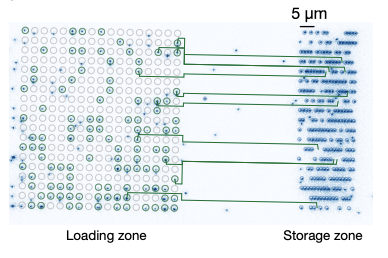Insider Brief
- A team of researchers report they made substantial progress in the continuous operation of a large-scale atom array.
- The planqc-led team reported on continuous operation of a 1,200-atom array for an extended period exceeding one hour.
- They add that it may be possible to operate arrays of 10,000 atoms with 100 atoms loaded at each cycle.
A team of researchers from Munich Quantum Valley, led by Johannes Zeiher, co-founder of planqc, and Immanuel Bloch, a planqc advisor, report they made substantial progress in the continuous operation of a large-scale atom array.
Their recent experiment, conducted at the Max Planck Institute of Quantum Optics in collaboration with planqc, has successfully managed to scale up the size of neutral atom qubit arrays. This experiment resulted in the continuous operation of a 1,200-atom array for an extended period exceeding one hour, which would be a critical advance in the scalability of neutral atom quantum computers. The team suggests 10,000-atom array isn’t out of the realm of possibility in the future.
The team published their findings in ArXiv, a preprint server researchers often use to publish their findings before the official peer-review process.
In one of the factors that affects the scaling the neutral atom approach, the expansion of neutral atom arrays in optical lattices or tweezers is hampered by the increased preparation times required as the system size grows. This has been a significant impediment to the assembly of large ordered arrays from optically trapped atoms, which are typically loaded in a stochastic manner, which means the process involves a degree of randomness or probability in the way outcomes are determined or events occur.

Addressing this challenge, the research team introduced an innovative method that leverages the recycling of atoms from one experimental run to the next, according to the paper. This approach also involves the continuous reloading and addition of atoms to the array. Through this technique, the team achieved the formation of densely-packed arrays containing more than 1,000 atoms within an optical lattice. The researchers point out this was done with a net cycle time of 2.5 seconds, with approximately 130 atoms being reloaded in each cycle. The method also ensures the continuous maintenance of these large arrays by reloading atoms that are lost from one cycle to the next, thereby sustaining the array’s size and density over time.
The team writes that the success of this experiment represents a substantial step forward in the ability to operate large-scale quantum systems. By circumventing the previously limiting factors of system size and preparation time, the researchers have opened up new possibilities for the application of quantum computing. The continuous operation of large atomic arrays is crucial for the development of scalable and fault-tolerant quantum computers, which are necessary for solving complex problems that are currently beyond the reach of classical computing methods.
Looking ahead, the research team anticipates that their technique could enable the assembly of even larger atom arrays. Theoretically, it’s possible to scale up to arrays containing about 10,000 atoms with 100 atoms loaded at each cycle, provided that sufficient storage area and high-fidelity detection capabilities are available.
A steady stream of large atomic array advances, along with this one suggests the potential for scalability. Coupled with recent advancements in quantum gates and logical quantum circuits, neutral atoms appears to be more and more as a viable platform for quantum computing.
The next — and most important — goal will be to use these advances to increase the potential for quantum computers to impact various fields by enabling simulations and calculations that are impossible with current classical computing technologies. From quantum simulations to quantum metrology and information tasks, the ability to maintain large, continuously operated atom arrays could lead to new insights and breakthroughs across multiple scientific disciplines.
Researchers on the study include: Flavien Gyger, Maximilian Ammenwerth, Renhao Tao, Hendrik Timme, Stepan Snigirev, Immanuel Bloch, Johannes Zeiher. Institutions involved include: Max-Planck-Institut für Quantenoptik, Munich Center for Quantum Science and Technology (MCQST), Fakultät für Physik, Ludwig-Maximilians-Universität, PlanQC GmbH
For more market insights, check out our latest quantum computing news here.




















